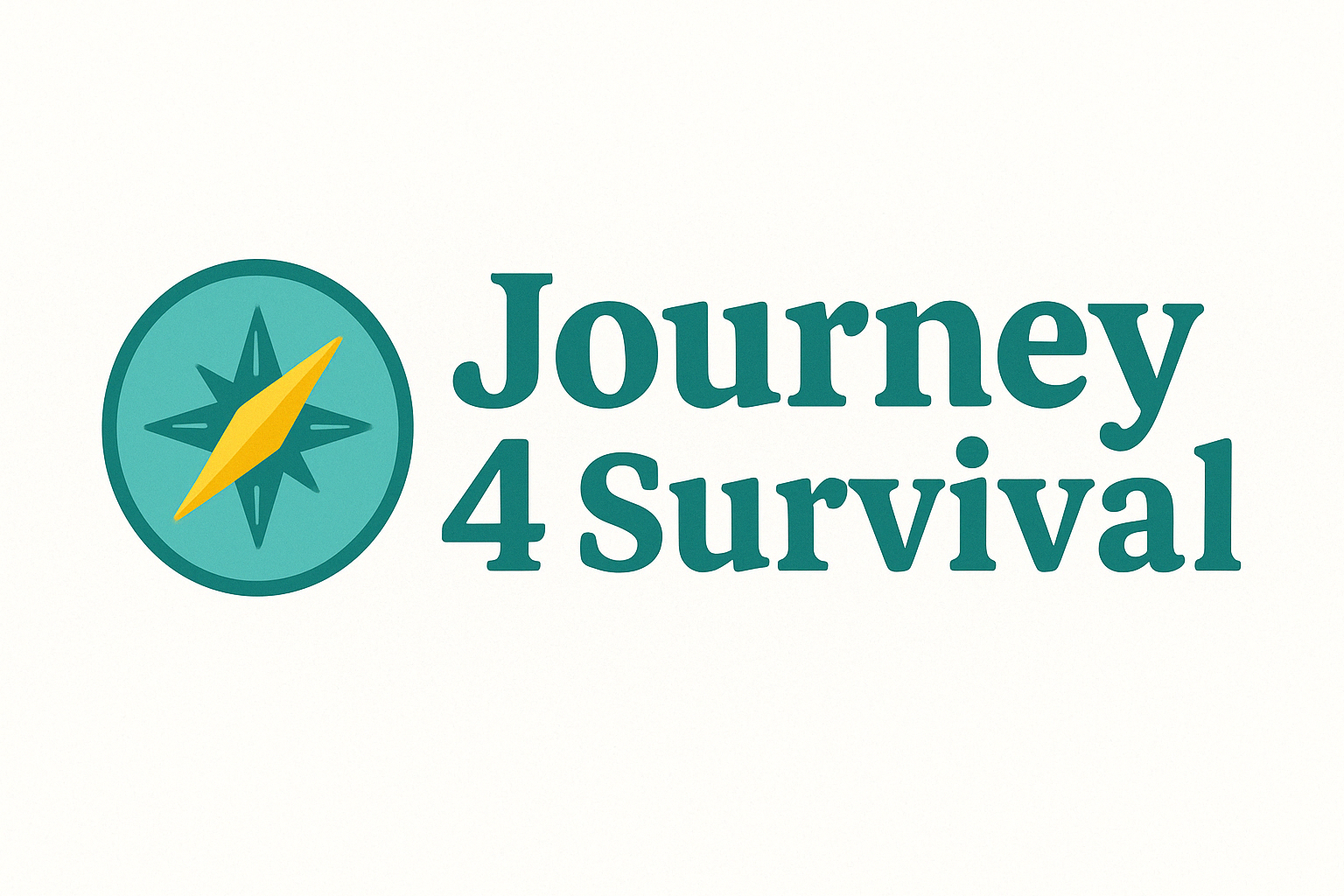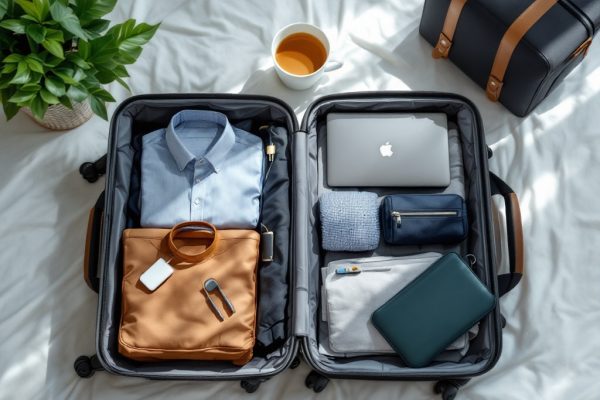Fasting While Traveling: What to Eat During Eating Windows?
Want to maintain your fasting routine while traveling? Discover how to navigate time zone changes, manage jet lag, and make healthy food choices on the go. Learn how to plan your meals, pack smart snacks, and adjust your eating window for a seamless travel experience. Unlock the benefits of fasting while exploring new destinations. Read on to embark on a journey of wellness and adventure!
Important information

- Plan ahead: Research restaurants near your destination, pack snacks, and adjust your fasting schedule for time zone changes.
- Prioritize nutrition and rest: Focus on balanced meals with protein, healthy fats, and whole foods, and stay well-hydrated.
- Utilize helpful tools: Use restaurant-finding apps and prepare some meals and snacks in advance.
- Be flexible: Adjust your fasting window as needed and don’t stress about minor deviations from your plan.
- Communicate your needs: Inform your travel companions and hosts about your dietary restrictions to ensure a smooth trip.
Understanding Fasting While Traveling
Plan Ahead
Consider your itinerary and typical meal times as you plan your trip, combining travel with fasting requires foresight. Pack nutritious snacks to bridge any gaps in your eating window.
Research Food Options
Research restaurants and markets near your destination. Focus on places that offer suitable options within your fasting window. Remember to adjust your fasting schedule to accommodate time zone changes.
Prioritize Rest and Nutrition
Prioritize rest and hydration to maintain your energy levels. Focus on balanced meals with protein, healthy fats, and whole foods.
Utilize Helpful Tools
Restaurant-finding apps can be invaluable for locating appropriate dining options. Preparing some meals and snacks in advance is also a wise strategy.
Communicate and Hydrate
Staying well-hydrated is crucial, so drink water regularly. Communicating your dietary needs to your travel companions and hosts can smooth the way for a more enjoyable and stress-free trip.
How Traveling Affects Fasting
Traveling can disrupt your fasting routine, especially with time zone changes affecting your eating schedule. Long journeys while fasting may lead to dehydration and fatigue. To avoid these issues, consider these tips:
- Plan your travel within your eating window.
- Pack nutritious snacks in case your travel unexpectedly extends into your fasting period, which can help maintain your energy levels.
With a little planning, you can enjoy both your trip and your fast.
Benefits of Fasting During Travel
Traveling while fasting offers unexpected advantages. It can boost your energy and focus, promoting disciplined eating and better hydration. Planning your nutrition becomes simpler, as fasting minimizes the need for constant snacking. This reduces travel stress and helps you bypass unhealthy airport temptations. It can also stabilize blood sugar, preventing fatigue and maintaining your well-being. Remember, individual results may vary, so consult a healthcare professional before making major dietary changes, particularly if you have pre-existing health conditions.
Managing Your Eating Schedule
Combat jet lag by adjusting your mealtimes to your destination’s time zone. When traveling east, postpone meals. Going west? Eat earlier than usual. If possible, schedule your travel during your typical eating window to maintain your fasting routine. And don’t forget to stay well-hydrated; drinking plenty of water is crucial for minimizing jet lag’s effects.
Tips for Managing Jet Lag
- Adjust your mealtimes to your destination’s time zone.
- Postpone meals when traveling east.
- Eat earlier than usual when traveling west.
- Schedule travel during your typical eating window to maintain your fasting routine, if possible.
- Stay well-hydrated by drinking plenty of water.
Fasting While Traveling
- Shorter fasting windows (such as 14/10 or 12/12) offer more flexibility during travel.
- A strict fasting regimen can be challenging on the road, so a more relaxed approach might be preferable.
- Prioritize whole, unprocessed foods during your eating periods.
Adjusting Eating Schedule for Time Zones and Jet Lag
Start your day with a protein-rich breakfast.
Choose whole-food carbohydrates for dinner to help regulate hormones like melatonin, which promotes better sleep.
A few days before your trip, try a modified alternate-day fasting plan to strengthen your circadian rhythm and reduce jet lag.
Flexibility and Modified Fasting Techniques
Modified fasting offers a practical approach to maintaining your dietary goals while traveling. By consuming a small portion (20-25%) of your daily calories, you can still experience some benefits even with a disrupted routine. Prioritize low-carb, high-fat options like avocados and full-fat yogurt to manage hunger and make healthier choices. Adjust your fasting window to accommodate time zone changes and new schedules. Pack convenient, fasting-friendly snacks and stay hydrated. When exploring local cuisine, choose healthy dishes that fit your eating window. Communicating your dietary needs to hosts or travel companions can be helpful. Be flexible and don’t stress about small deviations from your plan.
Consume a small portion (20-25%) of your daily calories to maintain some benefits even with a disrupted routine.
Prioritize low-carb, high-fat options like avocados and full-fat yogurt to manage hunger.
Adjust your fasting window to accommodate time zone changes and new schedules.
Pack convenient, fasting-friendly snacks and stay hydrated.
When exploring local cuisine, choose healthy dishes that fit your eating window.
Communicate your dietary needs to hosts or travel companions.
Planning Your Meals and Snacks
Pre-planning meals is crucial for any trip. Researching food options at your destination and packing non-perishable snacks like nuts, seeds, or protein bars can prevent hunger pangs during unexpected delays. These healthy snacks can be incredibly helpful.
- research local restaurants or grocery stores at your destination,
- pack non-perishable snacks like nuts, seeds, or protein bars to avoid hunger during unexpected delays,
- prepare some meals in advance to bring with you, especially if you have dietary restrictions.
During your designated eating times, prioritize nutritious meals packed with protein, healthy fats, and whole foods. Excellent choices include a grilled chicken salad, salmon with roasted vegetables, or a hearty lentil soup. These satisfying meals will keep your energy levels high throughout your travels.
- choose meals with protein, healthy fats, and whole foods to maintain energy levels,
- consider options like grilled chicken salad, salmon with roasted vegetables, or lentil soup,
- ensure your meals are satisfying to avoid overeating or unhealthy choices later.
Researching Food Options in Advance
Planning your meals is crucial for successful intermittent fasting while traveling. Research restaurants, cafes, and delivery services near your destination that offer options aligning with your dietary needs and fasting window. Check airport and train station offerings for healthy choices. This ensures suitable meals are readily available. Packing non-perishable, travel-friendly snacks like nuts or protein bars is also recommended. These can supplement meals or prevent unplanned eating, offering flexibility on the go.
Research dining options. Scope out restaurants, cafes, and delivery services near your destination that cater to your dietary needs and fasting schedule.
Check travel hubs. Explore healthy food options at airports and train stations along your route.
Pack smart snacks. Bring non-perishable, travel-friendly snacks like nuts or protein bars to supplement meals or prevent unplanned eating.
Packing Healthy and Emergency Snacks
Smart Snacking for Travel
Fuel your journey with smart snacks like protein bars, nuts, seeds, and dried fruit. These whole foods are easy to pack and travel well. High-protein options, such as jerky, nut butter, or protein-rich granola, offer lasting satisfaction.
Nutrient-Dense Fasting Options
For those fasting, nutrient-dense choices are key. Nuts, seeds, jerky, and dried fruit provide healthy fats and protein. Lighter options include fresh fruit or vegetable sticks with hummus, which are both portable and help maintain energy levels.
Meal Ideas for Eating Windows
Hydration is crucial, so incorporate water-rich foods like soups, yogurt, and juicy fruits into your diet. Protein is essential, and fish and chicken offer sustained energy and satiety. Smart snacking is easy with options like nuts, protein bars, yogurt, fruit, or veggie sticks with hummus. Include whole grains such as quinoa and brown rice for added benefits. Lean proteins, including fish and chicken, are excellent choices. Don’t forget healthy fats found in avocados and nuts. Boost your fiber intake with cruciferous vegetables like broccoli and cauliflower.
Hydration and Protein
Prioritize hydration with water-rich foods:
- soups,
- yogurt,
- juicy fruits.
Protein is vital for sustained energy and feeling full, with excellent sources including:
- fish,
- chicken.
Smart Snacking and Whole Grains
Healthy snacking options for sustained energy:
- nuts,
- protein bars,
- yogurt,
- fruit,
- veggie sticks with hummus.
Incorporate whole grains for added nutritional value:
- quinoa,
- brown rice.
Lean Proteins and Healthy Fats
Lean proteins are excellent for overall health, with top choices including:
- fish,
- chicken.
Don’t forget healthy fats which are crucial for various bodily functions, good sources include:
- avocados,
- nuts.
Fiber Boost
Boost your fiber intake for digestive health with cruciferous vegetables:
- broccoli,
- cauliflower.
What to Eat During Eating Windows
- Nourish yourself with protein-rich foods like fish, chicken, or legumes.
- Include healthy fats from sources such as avocados and nuts.
- Prioritize whole foods like fruits, vegetables, and whole grains for their abundant nutrients.
- Steer clear of ultra-processed options.
- Stay well-hydrated by drinking plenty of water.
Prioritizing Protein-Rich Foods
Fuel your adventures with sustained energy by choosing protein-rich foods. Excellent choices include lean meats, fish, eggs, legumes, and dairy. These satisfying options help manage hunger and provide essential nutrients for your active lifestyle.
Incorporating Healthy Fats
Enhance your well-being by incorporating healthy fats like avocados, nuts, and olive oil into your diet. These nutritional powerhouses offer sustained energy, boost brain and heart health, and are especially important during periods of fasting.
Choosing Whole Foods Over Ultra-Processed Foods
Prioritize whole, unprocessed foods like fruits, vegetables, and lean proteins for sustained energy and essential nutrients. This will provide your body with the necessary vitamins, minerals, and fiber for optimal function.
Limit processed foods, such as sugary drinks, fast food, and packaged snacks, as they often lack nutritional value and can be detrimental to your health. These foods are often high in unhealthy fats, added sugars, and artificial ingredients, which can contribute to various health issues.


















